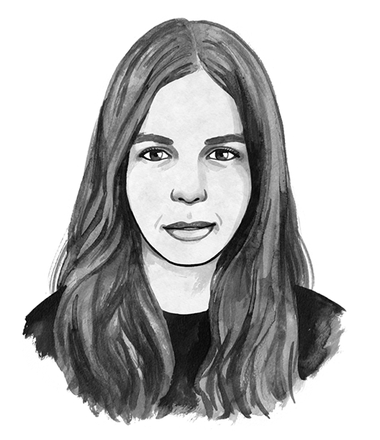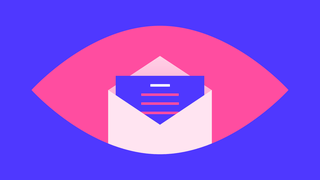Valentina Blackhorse was only 28 years old when she started to feel short of breath. In the weeks prior, she had watched the coronavirus tear through the Navajo Nation, where she lived, warning her family to stay home, wash their hands and wear masks. But that advice could not keep the virus out of her own house. She took a test and the results came back a week later. It was positive. By that point, her condition had deteriorated – potentially exacerbated by her rheumatoid arthritis, an autoimmune disease. She died the day after she received her results.
The young mum and pageant queen is one of the Navajo Nation’s youngest coronavirus victims. But unfortunately, her case is not unique. According to the Washington Post, the territory counted more than 2,757 infections and 88 deaths as of 8 May – the same number of deaths as Arkansas, which has a population 17 times larger. Apaches living in Arizona have been infected 10 times more than other people living in the State.
It’s assumed that Native Americans who live on reservations suffer more from the coronavirus thanks to underfunded local health systems and high rates of preexisting conditions such as hypertension, diabetes and cardiovascular disease. However, researchers say it’s difficult to truly assess the impact of the virus on these communities because no comprehensive data exists.
That’s partly because Native American health data is split up between different healthcare providers, according to Jourdan Bennett-Begaye, deputy managing editor of the online newspaper Indian Country Today (ICT). Since March, her team has been tracking coronavirus among people living on Native American lands by speaking directly with facilities run by the Indian Health Service as well as clinics run by tribes. “We just wanted to collect the comprehensive data because it’s not being done,” she told me over the phone. “If we can’t measure the impact, you can’t really manage [the virus] or allocate resources.”
But even ICT’s data is not complete. “We’re still missing a chunk of data from urban Indians who live in cities,” she says. People living in cities have more choice. Depending on their situation, they can seek treatment through Medicaid, Medicare, long and short-term care facilities, urgent care facilities, or the Veterans Administration health care system.
Few of these systems are linked up to share data. Even when Native Americans do use facilities that share data with states, they risk being miscategorised as Hispanic due to Spanish-sounding surnames or being grouped together with other minorities in the “other” category.
“By including us in the other category it effectively eliminates us in the data,” Abigail Echo-Hawk, director of the Urban Indian Health Institute, told the Guardian. Later, she added in a New York Times interview: “If you eliminate us in the data, you have effectively eliminated us for the allocation of resources.”
Because better data is seen as a vehicle to getting more resources, some experts are calling for coronavirus data to be “disaggregated” – broken down so it’s easier to see how many people from different ethnic groups are suffering from the virus and what they need. According to advocates for disaggregation, this would create a more convincing case that healthcare should be more evenly and effectively distributed.
In Europe, this debate is echoed in relation to the Roma community – a group of around 12 million who have long been subject to extreme prejudice and social exclusion. A European commission report published in April stated the infection rates reported in areas where Roma communities live was “unlikely to reflect the reality”, partly because several member states do not collect data disaggregated by ethnicity.
A disagreement on this subject played out on the opinion section of the Al Jazeera News website in July. Brandee Butler, director of Civil Liberties at human rights group the Open Society Foundation, referenced the Roma when she argued that European countries should stop hiding behind data protection concerns and collect data related to ethnicity, like most do with age and gender.
But Nani Jansen Reventlow, the founding Director of the Digital Freedom Fund, later wrote in response: “ ... Ending racism has to begin and end with political will,” she said. “Data, while helpful in guiding policy focus, are not a shortcut to creating this will.” Instead, she warned that even more data collection could create new threats to marginalised groups, being leveraged to fuel stigma or stereotypes.
What do you think? Can more and better data act as a short-term fix to discrepancies during this pandemic? Or would this solution only mask political failures while allowing some people to exploit the numbers? Let me know in the comments 👇
FOUR PLACES WHERE INDIGENOUS GROUPS ARE TRACKING THEMSELVES
Many Indigenous groups are not waiting for national governments to start tracking the spread of coronavirus in their communities. Instead they’re taking action themselves. Read below to find out how:
🇪🇨 In Ecuador, Indigenous groups have launched an information dashboard that monitors Covid-19 infection and death rates, and suspected and recovered cases by area and tribe since early May. “We are using technology to help document how we are being affected and hope it brings the resources we need to combat this virus,” Marlon Vargas, head of The Confederation of Indigenous Nationalities of the Ecuadorian Amazon told Reuters.
🇺🇸 As mentioned above, the team behind Indian Country Today (ICT), have been tracking coronavirus cases on Native lands themselves since March. However, they have recently partnered with John Hopkins University to make their dataset more comprehensive, aiming to expand to cover people living on reservations as well as urban Native Americans. ICT’s deputy managing editor Jourdan Bennett-Begaye told me that collecting data now would help with fast distribution of any vaccine that is created later.
🇧🇷 In Brazil, an Indigenous group has joined together with an environmental organisation to create an app, called "COVID-19 Indigenous Alert" which is designed to show Indigenous people the location of local virus hotspots they should try to avoid. The system is an attempt to compensate for the lack of information Indigenous groups have received from the government during the coronavirus, according to a report by AFP.
🇧🇷 The Kuikuro community, also in Brazil, have joined together with social scientists to develop their own contact-tracing app, according to Slate. It’s not clear how exactly the app works. But according to the article, the data collected by the community is going to inform strategies including “launching public awareness campaigns, raising funds to hire additional health professionals, arranging the regular delivery of fuel and food to families, and setting up a new oxygen therapy center”.
WEEKLY WEB ROUNDUP
For those people who are still sceptical as to whether contact-tracing apps even curb the coronavirus, a new study could offer a glimmer of optimism. It found that contact-tracing apps do in fact reduce infections, hospitalisations, and deaths at almost any level of adoption. However, the study was produced by the UK’s Oxford University in partnership with Alphabet – the company behind Google, ie a producer of one of the most commonly used contact-tracing systems in the world.
Finland managed to get 20% of its population to voluntarily download the national contact-tracing app in just 24 hours. How did it do that? Interviewed in Quartz, Sarah Kreps, a public policy and law professor at Cornell University, said one reason is the world is becoming more tolerant of corona-related surveillance tech as we grow more accustomed to living through a pandemic.
Singapore’s police have been testing two pilot-free drones that are programmed to detect gatherings and automatically stream that footage to the police. According to Airobotics, the company that made the drones, this is the first time automated commercial drones have been approved to fly over a major metropolis.
SEE YOU NEXT WEEK!


